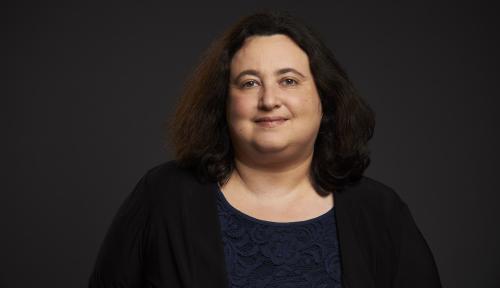A year on from the implementation of Mifid II in Europe, IROs in the US are seeing how the regulation is changing the EU’s investment management landscape – and are watching for ripple effects. That’s because two areas IROs typically manage – research coverage and corporate access – are starting to be impacted.
It’s important for IROs in the US to understand how their interactions with analysts and investors could change due to the mammoth regulation so they can develop effective strategies to mitigate potentially negative developments.
Change coming to the IRO realm
The main driver behind changes to research-related relationships is the set of Mifid II requirements stipulating that buy-side firms conducting business in the EU may no longer pay for sell-side services on what regulators consider to be a vague or arbitrary basis. Instead, buy-side firms are now required to have a robust mechanism for determining the value of the research services they consume and must pay for those services independent of their trading volumes. Because of this greater scrutiny on research spend, investors are spending less on research and being more conservative in how they spend their remaining budget.
How good was the soup?
Consider this analogy for the old research pricing model. In the pre-Mifid II days, sell-side services were like a multi-station dinner buffet the buy side went to every night. The first night, the buy-side diner visited the soup station, had a little salad from the salad bar and then grilled salmon from the seafood section. The next night, it was soup again, shrimp cocktail and a steak from the carving station. This continued with the buy-side customer eating different quantities of the same, or different, food every night for three months, but never receiving a bill.
At the end of the quarter, it was time for the buy-side diner to pay up, but the sell side still didn’t present a bill per se. Instead, the cost for each station was largely left to the buy-sider’s discretion, which went something like: Hmm, I seem to remember that the soup and salad was OK and the seafood was great, but I didn’t care for the steak. I’ll divvy up the money I have (read equity commission flow) between the different stations (the brokers providing research).
If volatility was low and the investor wasn’t transacting much, there wasn’t much commission to split. If the buy-side firm happened to trade more the next quarter and hence generate more commission to spread around, it would pay more, even if it consumed the same volume of services. In short, it was qualitative, anecdotal and – to a regulator’s eye – arbitrary pricing.
While not actually mandated by the legislation, under Mifid II, buy-side and sell-side firms have leaned toward a more à la carte arrangement. In order to have a rigorous process to connect value with price, investors are increasingly trying to count everything consumed at the buffet and attempt to set a price on each interaction they have with a research provider – analyst meetings, conferences, bespoke research, and so on – to reflect the specific value their investment professionals received. This requires an understanding of both the services that have been used and which research firms add the most value to the investment process, such as differentiated ideas, accurate forecasts or great insights.
Compared with the all-you-can-eat buffet model, this approach is more detailed and therefore more cumbersome and, regardless of how firms handle the change, the requirements of quantifying value and unbundling research and trading costs are putting an end to the buffet.
Less research coverage? Or just different?
When there’s no more buffet, what happens to the cooks? There has been plenty written about how these requirements will shrink sell-side firms’ research operations. In one survey Visible Alpha conducted, 52 percent of investment firms said they had experienced cuts to their spending on external research.
These trends have IROs rightly worried about a loss of research coverage. After all, if an IRO is managing coverage from six or eight investment banks and the number suddenly drops to four or five, it’s bound to be troubling.
In this new world, however, it’s not all about the quantity of research coverage. Because of the market dynamics discussed above, the diversity of coverage is increasingly critical. If you’re an IRO working for an agri-business, having five shops covering your firm may not be as important as the coverage you get from that one analyst who is an uber-expert on soybeans and writes must-have research reports from her small office above a hardware store. Unfortunately, while Mifid II was intended to help independent research providers, it has instead hit them disproportionally hard, as investors spend their declining research euros more conservatively.
Corporate access model also shifting
Even more dramatic trends are at work in the corporate access space. Unlike research, where regulators have focused on reducing perceived conflicts by decoupling research from trading, payments for corporate access have been much more tightly restricted. Investors cannot pay for the privilege of attending a corporate access event – they can only compensate the broker for the services the broker itself delivers: concierge services in setting up the meeting, involvement of an accompanying analyst, and so on.
How will this change play out with corporate access? While a recent Ipreo survey suggests that two thirds of issuers still intend to use investment banks as their primary conduit for access to investors, a number of large asset managers have begun to hire teams to handle this function, and a growing number of intermediaries and platform providers are looking to grab a slice of the corporate access pie.
So far, few of these firms or platforms have gained much traction, and we expect investment banks to continue to be the primary facilitator of meetings between issuers and buy-side firms. Nevertheless, the situation is likely to get more, not less, confusing over the next 12-18 months as the second-order effects of the regulatory changes play out.
The evolving landscape means IROs must stay alert
Technology is usually the force that disrupts old industries and ingrained business practices. In this case, however, the change agent is regulatory shifts.
As for what IROs should do to prepare themselves and their teams for different and perhaps less research coverage, the best first step is education. Convening sessions with appropriate executives that explain the changes and enlisting their help in developing new strategies is a smart move. Transparent companies that are easier for analysts to cover often garner more coverage, so a communication and disclosure strategy that encourages analyst coverage might be worth considering.
On the corporate access side, the status quo will probably not be changing quickly, with the investment banks likely to remain the primary choice for most investors – particularly for conferences and roadshows. That said, IROs should be prepared for more direct inquiries from larger investors. While alternate corporate access platforms may be attractive for smaller companies with few analysts following them, firms that have institutional analyst coverage may want to consider the synergistic benefits of maintaining good access for those banks in encouraging the continuation of that coverage.
Mifid II is changing the world of research coverage and corporate access in Europe, and some of those changes will impact the US. Smart IROs will be keeping an eye on developments and preparing to adjust their strategies to meet the new challenges.
Scott Rosen is CEO of Visible Alpha, a provider of discovery, analysis and valuation tools










